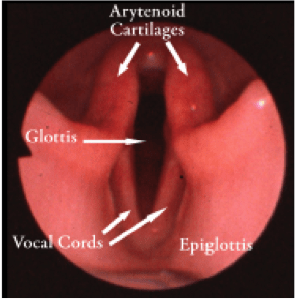By far one of the most common reasons families bring their pets to veterinarians is because of coughing. Nobody wants to see their cat chronically cough. Nobody wants to be kept up all night because their coughing dog is keeping them awake. Given the complexity of this problem, I wanted to dedicate time to explaining what coughing is and what can be done to help fur kids. Please share this information with other pet parents who will appreciate this information. Happy reading!
Coughing – What causes it?
That seems like such a simply question, right? Wrong! Coughing is quite a complicated process, as it can be either reflex or a conscious action. To understand what a cough is, one needs to have a basic understanding of airway anatomy. The respiratory tract can be divided into distinct regions:
- Upper airway – includes nose, mouth, larynx (voicebox), and trachea (windpipe)
- Lower airway – includes small air conduits like bronchi and bronchioles
- Lung tissue
- Chest wall
- Pleural space – the potential space between the body wall and lung tissue
- Diaphragm
A normal opening in the larynx – called the glottis – normally is covered by a structure called the epiglottis when an animal eats and/or drinks. This is a protective mechanism to prevent food and fluid from going down the “wrong tube.” By definition, a cough is a sudden and forceful exhalation against a closed glottis. When the glottis opens and turbulent air passes through it, the sound created is a cough.

Normal anatomy of the larynx showing the glottis and epiglottis. Image courtesy of BluePearl Vet.
To say there are many causes of coughing is an understatement. Veterinarians categorize the causes of coughing based on etiologies below, and I’ve listed some of the more common diseases in each category (but these lists are certainly not all-inclusive).
- Inflammatory causes – includes diseases like feline asthma, canine chronic bronchitis, eosinophilic lung disease
- Physical & traumatic causes – includes collapsing trachea, foreign objects in the airway, esophageal dysfunction (i.e. megaesophagus)
- Cancer
- Infectious diseases – includes lungworm infestation, toxoplasmosis, blastomycosis, histoplasmosis, coccidiodomycosis, cryptococcosis, pneumonia, aspergillosis, canine infectious respiratory disease complex (including bordatellosis and canine influenza), and heartworm disease
- Cardiovascular diseases – includes congestive heart failure, degenerative heart valve diseases, and pulmonary thromboemboli
Coughing – How does one figure out the cause?
This is the challenging part! The veterinarian will ask you a lot of questions, and it is essentially you provide honest and accurate anwers. For example, the doctor will want to know:
- What does the cough sound like?
- Is the cough exacerbated by exercise?
- Is the cough worsened by eating/drinking?
- Does the pet produce any phlegm after coughing?
- How often does your pet cough?
- Is the cough worse during the day or at night?
After obtaining a complete history, veterinarians will perform a thorough physical examinations. They will watch your pet breathe, evaluating breathing patterns and effort of breathing. They will palpate the windpipe in an attempt to trigger coughing. They will auscultate (use a stethoscope) to listen carefully to both the heart and all lung fields. The information gleaned from a patient’s history and physical examination enables the veterinarian to develop a diagnostic plan to help figure out the cause of a pet’s coughing. Tests often recommended for coughing pets include:
- Blood and urine testing to screen for metabolic disease
- Diagnostic imaging – for example, obtaining radiographs (x-rays) of the chest is often very helpful
- Infectious disease screening
- Airway testing – for example, tracheobronchoscopy to look inside the windpipe and lower airway
There are some unique differences between dogs and cats. Dogs cough with both airway disorders and cardiovascular diseases. Cats essentially never cough due to heart disease, and thus one should focus diagnostic efforts to determine the underlying airway problem. Pet parents will likely find it helpful to partner with a board-certified veterinary internal medicine specialist to develop a logical and cost-effective diagnostic plan.
Coughing – How is it treated?
Effectively treating a patient’s cough requires an accurate diagnosis. Congestive heart failure is certainly treated differently than lungworm infestation. The veterinarian has to know with what they’re dealing to treat pets effectively. Some pet parents don’t want to or can’t do the tests recommended by veterinarians. While this is OK, the restrictions can also potentially compromise the likelihood of a positive outcome. Veterinarians also don’t have crystal balls or magical powers, and thus pet parents shouldn’t expect doctors to be able to divinate an accurate diagnosis without testing. Without an accurate diagnosis, effective treatment may not be possible. Veterinarians will do their best to develop a logical treatment plan regardless of whether they have a definitive diagnosis, but treatment success certainly can’t be guaranteed without one.
The take-away message about coughing in dogs & cats…
Coughing is common in dogs and cats. There are a myriad of causes, and thus a thorough diagnostic investigation is essential to determine a definitive diagnosis and develop an effective treatment plan. Pet parents are encouraged to partner with their family veterinarians and a board-certified veterinary internal medicine specialist to maximize the likelihood of a positive outcome.
To find a board-certified veterinary internal medicine specialist, please visit the American College of Veterinary Internal Medicine.
Wishing you wet-nosed kisses,
CriticalCareDVM

